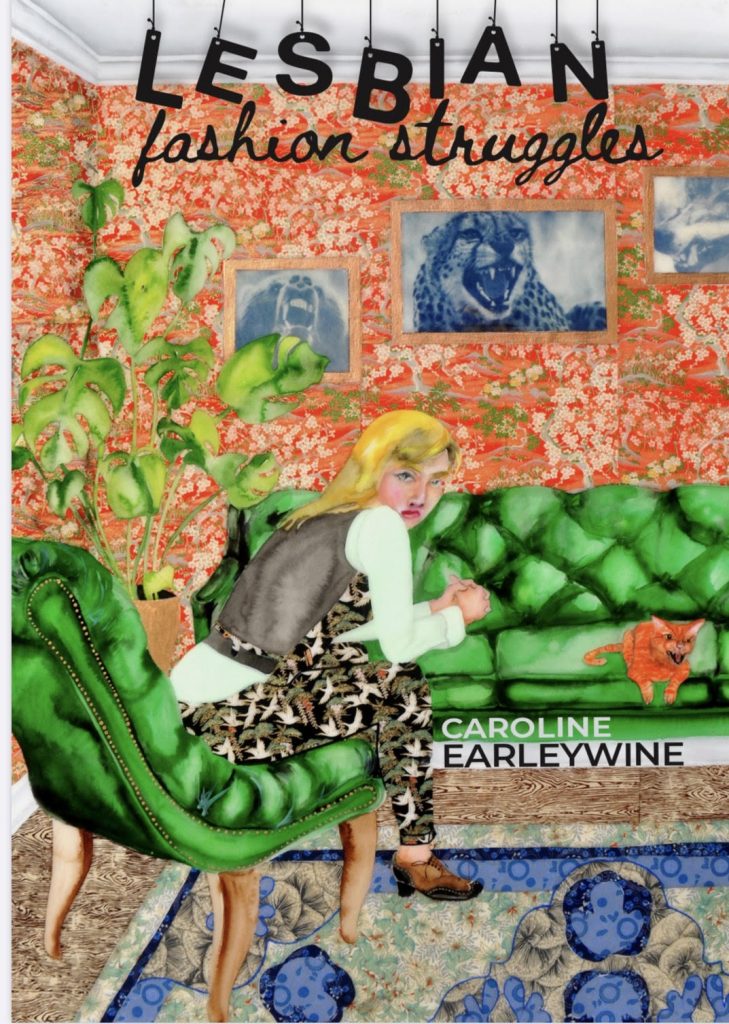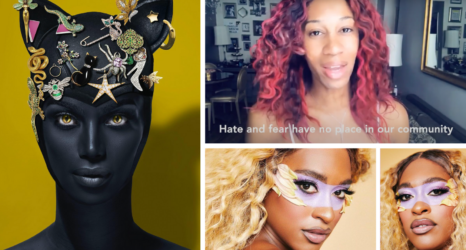Coming out doesn’t make you at home in the world; nor, certainly, does sex. You need bonds beyond sex: a community, a culture, a shared set of obsessions.
—“Love on the March,” Alex Ross, The New Yorker 11/12/12
When I was a young lesbian in rural New Jersey in the ‘70s, I was completely lost in a dark sea and sky—without stars, sun or moon to guide me. The word “lesbian” was only uttered, when it was uttered at all, with contempt and mockery. There appeared to be no place for me in society and culture, and to express myself would be dangerous. I wrote poems, and kept my poems private: a community of one.
Then I saw two words in the Village Voice that pierced through the fog: Lesbian Nation. A whole nation of people like me!

It’s 2021, and I’m still sharply attuned to Lesbian Nation, especially the poet part of the population. Where are the stars, sun and moon of lesbian poets? I look for you always. I love most those lesbian poets who are fearless and inclusive and complete, who don’t censor themselves. Let me share your voices with the world. So I did, starting Lavender Review and Headmistress Press. To celebrate and promote these projects, I’m posting a series of book reviews or interviews here on msmagazine.com.
Full disclosure: I’ve published some of these poets in Lavender Review, though I haven’t published any of their books. Headmistress Press made Lesbian Poet Trading Cards for some of these poets. Some of these poets have served or will serve as judges for the Headmistress Press Charlotte Mew Chapbook Contest, now in its seventh season, and open for submissions until July 4, 2021, judged this year by Julie Marie Wade. Also this year, Headmistress Press is holding our second annual Sappho’s Prize in Poetry, for one full-length poetry collection by a lesbian.
Vi Khi Nao, Naomi Replansky, Mary Meriam, t’ai freedom ford, and Charlotte Mew were the first five poets in this series.
How to Dress a Lesbian?
How does a living lesbian dress? How do we make conventional, traditional garments into our own looks? How do we send signals to other lesbians? For this special edition, Caroline Earleywine, author of Lesbian Fashion Struggles (Sibling Rivalry Press, 2020) and Mary Meriam, author of My Girl’s Green Jacket (Headmistress Press, 2018), sewed a cento with excerpts from their books, interwoven with excerpts from other poets.
The Latin term “cento” derives from Greek κέντρων, meaning “‘to plant slips’ (of trees).” A later word in Greek, κεντρόνη, means “patchwork garment.”

I have to mention your mother-
land, Lesbos, surrounded by salt-slick
water with Sappho and her anguished
love poems and don’t we all live
there, or wish we did? An island
of women who wear crowns of mouths
that don’t know how to quiet, who damn
the uncomfortable, who owe men nothing,
who own their desire.
2.
Did they question the men also?
Or did they only question the women?
The lesbians are policing the lesbians.
Who are you? How do you define yourself?
I list weakly as the interrogators
peer through my telescope backwards.
I am all adrift in the spring fog, trembling.
Port to starboard, keel to mast, mainstay,
my sails a-shiver in the salt-stained waves,
I am unknown to myself, with only a word
my sisters found on Lesvos and gave me.
3.
I never was, in truth, a daughter.
Only a question that couldn’t be asked,
only a problem that couldn’t be solved,
wearing no one’s imprimatur.
4.
As a verb, “fashion” is exceedingly queer. Our queer community learns to fashion identity from and through the clothes we wear, the costumes we choose, the fabrics we desire—and the statements these make. No other community allows clothing to serve as such a primary, dominant marker of subjectivity, both individually and collectively. We don’t simply permit fashioning; we rely upon what we put on our bodies to tip off, to signal, and to serve as evidence of who we are.
5.
After he assured me he thought no differently
of me, he asked if I wanted any of his old clothes.
6.
We come out naked. First when we’re born; then, as lesbians. When we’re born, right away, we’re dressed by others. We’re subject to decisions made by others about how we appear to the world. Clothes become definitions of who we are: male, female, rich, poor, cared about, neglected. This granddaddy clearly cared. His offer is protective, compassionate, even hip to lesbian trans fashion.
7.
The magazines say men prefer it hanging down to the middle of my back. They don’t say this makes me more of a target, that it can be fashioned into an extra limb to grab, one that can’t hit back. My hair followed me to bars, extending invitations to men without consulting me.
8.
With the speed and disorientation of a physical attack, this hair rushes from magazines to target to helpless limb to stalker to unruly seductress. Who knew hair could mean so much? Hair is a signal. See how much time and effort I put into my hair? Come Hither. See how little it matters to me what you think of my hair? Keep Away. When I see short, careless hair on a woman, it signals lesbian to me.
9.
Spring wind has always been my happiness,
the voice I learned to hear when other voices
shouted. She’s lifting my hair like lovers do,
taking me windward with her tree of yes,
without a hell for its return address.
10.
Queerness is often looked at as something that goes against nature, but here it is in tune with the wind. Here it is a celebration. Here, nature is a lover that sees us in our truest form, running hands through our hair, a gentle pull back toward ourselves, to who we are beneath the world’s noise.
11.
“This explains why you don’t wear make-up,” she sighs.
12.
The crows, as all girls know, make shimmer-black
in rainbow streaks, and eye you like a snake.
The crows are girls that no one listened to,
whose rituals and wishes no one knew.
13.
Lately I dream about
lipstick. About staining my lips
bright, walking down aisles lined
with bullets of color to choose the
perfect shot. One to make my
mouth a bloody declaration.
Bright as a dare, not a blushing
apology, a shade so loud it breaks
teeth.
14.
I am a nameless creature
under all of these layers, I am
digging and digging and have yet
to hit the skin of me.
15.
All I care about is nakedness, simplicity. I want a painting to be absolutely naked. . .
16.
You may prefer another word or hate lesbian
I prefer to make a bold simple statement
You may feel shadowed by the unserious
You may wish to be quiet and invisible
My female parts love her female parts
This is a political poem with emotional parts
17.
Look at man’s uniform drabness, his impersonal envelope!
Over chicken wrists or meek shoulders, a formal, hard-fibered assurance.
The drape of the male is designed to achieve self-forgetfulness.
18.
Still, our closets are filled
of sleeves empty with possibility,
extended toward us.
19.
You may travel here by jet and car
And never reach me I am in so deep
The gates stay locked
Nothing normal has ever happened to me
20.
I was aware that my mother had encouraged a tremendous amount of physical preening, which she directly connected to my attainment of a boyfriend, a fiancé, and hopefully, a husband. She had made clear to me throughout my adolescence that I was not concerned enough about my appearance, which greatly endangered my status as a desirable woman, a dateable woman, and ultimately a marriageable one. But with Angie, in her presence, I felt beautiful, luminous. It wasn’t as though I surrendered all thought of “aesthetic presentation,” but rather, I was able to embrace a natural beauty in myself and in her that my mother did not recognize as real. It was too intrinsic, too effortless. Real beauty required work. Had this love with and for Angie been possible in high school, I might have “let / my body be beautiful” many years before, rather than forcing upon it a tailored, conformist, pre-fab “attractiveness” that served only to please my mother and never myself.
21.
maybe it was a truth
I could only face dressed in alcohol and laughter,
disguised as a joke, the glass slipper I tried on
in the glitter of night and took back
off again when morning came.
22.
Here in the darkening of day, my dear,
I wear the hot pink top and leaves turn gold,
And you and I, apart, keep growing old.
I wonder if we nonetheless cohere,
or if my heart twigs dream a different tree.
23.
Where is my girl’s green jacket? She will keep the earth.
Return my trees. Bring back the rocks and rooks, my treasures
and all streams, swift or slow, the fields, the sheep, the earth.
24.
they wear pride flags tied around their necks as capes,
become the heroes themselves.
Sources:
- Caroline Earleywine, “Ode to the Word Lesbian”
- Mary Meriam, “Attack of the Fanatics”
- Mary Meriam, “Psalm of the Sweetest Water”
- Megan Volpert, Closet Cases: Queers on What We Wear
- Caroline Earleywine, “Granddaddy’s Closet”
- Mary Meriam
- Caroline Earleywine, “Blonde”
- Mary Meriam
- Mary Meriam, “Return Address”
- Caroline Earleywine
- Julie Marie Wade, “My Mother, On Learning I Love a Woman”
- Mary Meriam, “Crows”
- Caroline Earleywine, “Lipstick”
- Caroline Earleywine, “Why I Cut My Hair / Why I Have Tattoos / Why Most Clothes I Wear / Don’t Feel Like They Fit”
- Sophia Healy, Lone Stars
- Mary Meriam, “A Political Poem with Emotional Parts”
- Carolyn Kizer, “Pro Femina”
- Caroline Earleywine, “Lesbian Fashion Struggles”
- Mary Meriam, “Map”
- Julie Marie Wade, “The Biography of a Poem”
- Caroline Earleywine, “Lesbian Shoes”
- Mary Meriam, “Sentimentality”
- Mary Meriam, “The Earth”
- Caroline Earleywine, “GSA”
You may also like:





